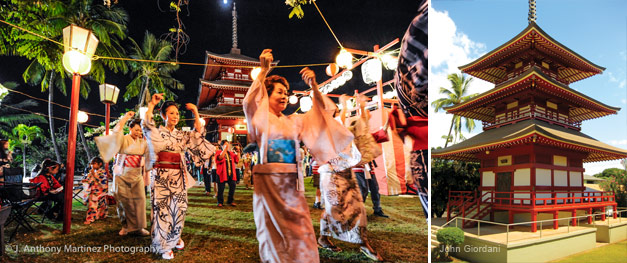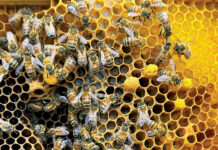Story by Lehia Apana

A centuries-old Buddhist tradition finds new life every summer here in the Islands. June marks the opening of Maui’s obon season, when typically quiet Buddhist temples welcome a flurry of revelers.
At its core, obon is a time to honor the deceased. Graves are cleaned and prayers are said—but it is not a somber occasion. The Technicolor festival is marked by vibrant kimono, bright lanterns, and booming taiko drums that awaken and welcome ancestors back to this world. Gray-haired ladies in kimono sway and step alongside little girls in Hello Kitty yukata, dancing ‘round and ‘round the yagura (tower).
“Every time I step into the dance circle, I think of my ancestors,” says Japanese Cultural Society board member Lynn Araki-Regan. “It’s a very touching time for me.”
Each year, Lahaina Jodo Mission honors the deceased with a lantern procession around its Daibutsu (Great Buddha statue) on the temple grounds, which concludes at the beach fronting the property. There, lighted lanterns inscribed with personal messages and prayers for loved ones are set to sea. It’s the only lantern-floating ceremony on Maui.
Throughout the summer, Maui’s temples take turn hosting obon ceremonies, and celebrants of all cultures flock to locations from Kahului to Kula for this Japanese tradition with a Hawaii twist: the festivals are famous for dishing up local favorites like andagi (deep-fried dough), shave ice and chow fun.
This year, Lahaina Jodo Mission has even more to celebrate. The temple plans a centennial for October, marking 100 years since the arrival of the first Jodo priest in Lahaina.





